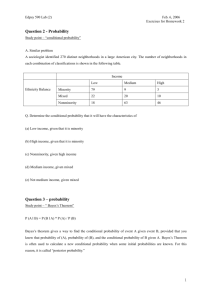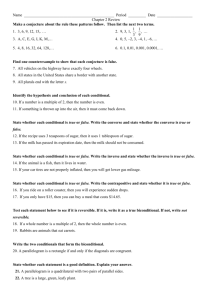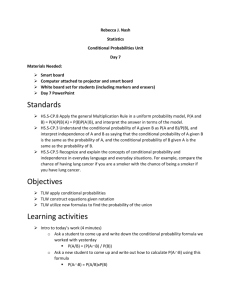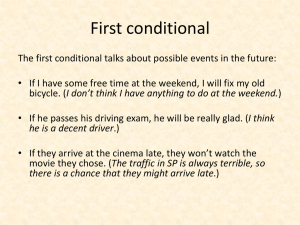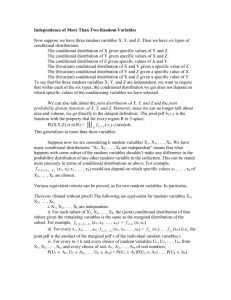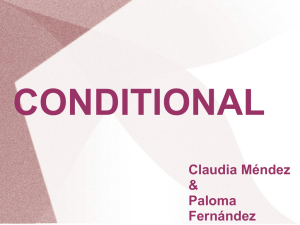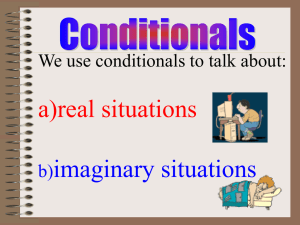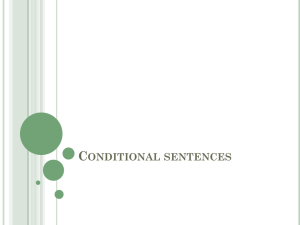PowerPoint
advertisement
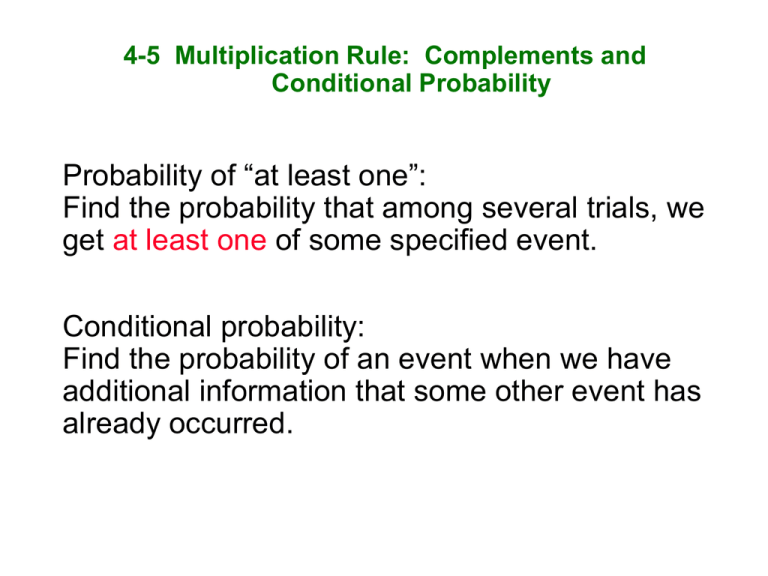
4-5 Multiplication Rule: Complements and Conditional Probability Probability of “at least one”: Find the probability that among several trials, we get at least one of some specified event. Conditional probability: Find the probability of an event when we have additional information that some other event has already occurred. Complements: The Probability of “At Least One” “At least one” is equivalent to “one or more.” The complement of getting at least one item of a particular type is that you get no items of that type. Finding the Probability of “At Least One” To find the probability of at least one of something, calculate the probability of none and then subtract that result from 1. That is, P(at least one) = 1 – P(none). Example Topford supplies X-Data DVDs in lots of 50, and they have a reported defect rate of 0.5% so the probability of a disk being defective is 0.005. It follows that the probability of a disk being good is 0.995. What is the probability of getting at least one defective disk in a lot of 50? Example – continued What is the probability of getting at least one defective disk in a lot of 50? P at least 1 defective disk in 50 1 P all 50 disks are good 1 0.995 50 1 0.778 0.222 Conditional Probability A conditional probability of an event is a probability obtained with the additional information that some other event has already occurred. P ( B | A) denotes the conditional probability of event B occurring, given that event A has already occurred, and it can be found by dividing the probability of events A and B both occurring by the probability of event A: P( A and B) P( B | A) P( A) Intuitive Approach to Conditional Probability The conditional probability of B given A can be found by assuming that event A has occurred and then calculating the probability that event B will occur. Example Refer to the table to find the probability that a subject actually uses drugs, given that he or she had a positive test result. Positive Drug Test Negative Drug Test Subject Uses Drugs 44 (True Positive) 6 (False Negative) Subject Does Not Use Drugs 90 (False Positive) 860 (True Negative) Example - continued Positive Drug Test Negative Drug Test Subject Uses Drugs 44 (True Positive) 6 (False Negative) Subject Does Not Use Drugs 90 (False Positive) 860 (True Negative) P subject uses drugs | subject tests positive P subject uses drugs and subject tests positive P subject tests positive 44 1000 44 0.328 134 134 1000 Confusion of the Inverse To incorrectly believe that P ( A | B ) and P ( B | A) are the same, or to incorrectly use one value for the other, is often called confusion of the inverse.

